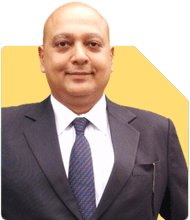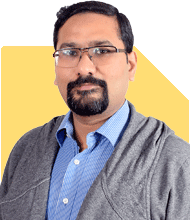Is Johnson & Wales University a good MBA college for someone with 5 years of IT experience?
Sushil Sukhwani |617 Answers |Ask -Follow
Study Abroad Expert - Answered on Oct 19, 2024

What colleges you call good for MBA in USA. I am currently doing MBA with IT concentration from Johnson and Wales University, Providence campus. Its segmented as college of business, for I had a past experience of 5+ years. Now do you call that a good college or an option?? Am afraid since am already there doing it.
First of all thank you for reaching out to us. To answer your question, getting an MBA from Johnson and Wales University, particularly with its College of Business may not have the same national recognition as some larger universities, however it offers a solid education and can be a good choice depending on your career goals and personal preferences. Since you are already studying there I would encourage you to continue by saying that your experience and what you make of it can significantly impact your outcomes, so focus on maximizing your opportunities while you're there.
If you feel like you still need to make the switch to a different university there are plenty of options that are open to you. It’s never too late to make a decision that will ultimately benefit you in your career.
For more information you can visit our website: edwiseinternational.com
You can also follow us on Instagram: @edwiseint
You may like to see similar questions and answers below
Aashish Sood | Answer |Ask -Follow
CAT, Management Expert - Answered on Apr 29, 2023
Patrick Dsouza |1356 Answers |Ask -Follow
CAT, XAT, CMAT, CET Expert - Answered on Aug 12, 2023
Sushil Sukhwani |617 Answers |Ask -Follow
Study Abroad Expert - Answered on Apr 25, 2024
Patrick Dsouza |1356 Answers |Ask -Follow
CAT, XAT, CMAT, CET Expert - Answered on Jun 20, 2024
Patrick Dsouza |1356 Answers |Ask -Follow
CAT, XAT, CMAT, CET Expert - Answered on Jun 04, 2025
Dr Nagarajan J S K |2188 Answers |Ask -Follow
NEET, Medical, Pharmacy Careers - Answered on Aug 05, 2025
Dr Nagarajan J S K |2188 Answers |Ask -Follow
NEET, Medical, Pharmacy Careers - Answered on Aug 05, 2025
Dr Nagarajan J S K |2188 Answers |Ask -Follow
NEET, Medical, Pharmacy Careers - Answered on Aug 05, 2025
Dr Nagarajan J S K |2188 Answers |Ask -Follow
NEET, Medical, Pharmacy Careers - Answered on Aug 05, 2025
Dr Nagarajan J S K |2188 Answers |Ask -Follow
NEET, Medical, Pharmacy Careers - Answered on Aug 05, 2025
Nayagam P P |9934 Answers |Ask -Follow
Career Counsellor - Answered on Aug 05, 2025
Nayagam P P |9934 Answers |Ask -Follow
Career Counsellor - Answered on Aug 05, 2025
Nayagam P P |9934 Answers |Ask -Follow
Career Counsellor - Answered on Aug 05, 2025
Nayagam P P |9934 Answers |Ask -Follow
Career Counsellor - Answered on Aug 05, 2025
Dr Nagarajan J S K |2188 Answers |Ask -Follow
NEET, Medical, Pharmacy Careers - Answered on Aug 05, 2025

















